The
Pennsylvania National Guard Military Museum is located at Fort Indiantown Gap in Annville, Lebanon County. The museum is open Monday and Fridays from 10:00 AM to 4:30 PM, Tuesday, Wednesday, Thursday and Saturdays by appointment only. Admission is free.
We've visited the museum a few times and you can check out one of our previous posts about our visit
HERE. This time around we want to feature some of the outdoor exhibits located along Fisher Avenue, about a 1/2 mile from the actual museum building and grounds. There is a little parking lot along Fisher Avenue where you can park (free) and then walk around to see the displays.
You'll need to be patient as this web page loads. It's graphic intensive. We did our best to keep all of the information markers with the piece of military equipment that its referring together. You can walk up to each exhibit and read the information and take photographs. You're not permitted to climb on them. We may have a few of them out-of-order
This
M52 (155mm) Towed Howitzer was the standard heavy field gun for the United [S]tates during World War II. During World War I the United States was poorly equipped with heavy artillery. To address this issue, the U.S. Army developed several prototypes in the 1920s and 1930s. However, due to lack of government funding, it was not until 1938 that the M1 was adopted for military service. After several changes, the M2 version seen here (serial NO.3217) saw widespread action in both the European and Pacific theater[s] of operations. It served or was attached to each division during World War II and during the war the howitzer received the nickname "Long Tom". It also came in an 8-inch (203mm) version which had a heavier barrel.
The
M110 203mm self-propelled howitzer, commonly known as the 8-inch, first entered service with the US Army in 1963. The M110A2 variant presently displayed included the longer M201 cannon tube of the M110A1 model and the double-baffled muzzle brake added in the A2 version. The M110A2 was the largest caliber self-propelled howitzer in the Army inventory and was designed to provide general support to ground maneuver forces, to include tactical nuclear ammunition. The M110A2 had an authorized crew of 12. The howitzer itself transported only two 200-pound projectiles and five men, while the rest of the ammunition and seven crewmen traveled aboard a tracked M548 ammunition carrier.
This
M42 40mm Self-Propelled Anti-Aircraft Gun commonly referred to as "Duster" was built for the United States Army from 1952 until the end of 1959. A total of 3,700 M42 were built by the General Motors [Corp] under their tank division. The company used components from the M41 light tank in the development of the M42 Duster. The M42 was initially designed for an anti-aircraft role, however, it proved highly successful when used in the Vietnam War against unarmored ground forces. Pennsylvania National Guard had the M42 in the 3rd Automatic Weapons Battalion, 213th Artillery. The unit was re-organized as elements of the 3622d Maintenance Company and several batteries of the 108th Field Artillery.
When the military travels world wide they tend to bring a lot of material. The
M915A1 was developed as a way to streamline the shipping of needed material used by the military over the standard 2 1/2 and 5 ton trucks. The early versions produced by AM General included the M915 and M915A1 models. Later Versions [sic] M915A3 to A5 versions were produced by the Freightliner companies. A total of 2,200 M915A1 models were purchased by the military. This particular M915A1 model was used by the 213th Area Support Group's (ASG) 131st Transportation Company.
This
M60A3 Main Battle Tank (MBT) is a fully tracked, armored, combat vehicle operated by a crew of four consisting of a driver, gunner, loader, and a tank commander. The vehicle is powered by a 750 horsepower V-12 air cooled compression ignition diesel engine. It has a 105mm main gun system, and carries 63 rounds for the main gun on board. The vehicle is further equipped with a deep water fording kit.
The
M46 Patton was developed as a rebuild program for the M26 shortly before the outbreak of the Korean War. A new powerpack was installed in the rear hull, leading to modified engine access doors and a different rear panel. Like the M26A1, it was armed with the M3A1 90mm main gun, which had a new muzzle break. The M46 is most easily distinguished from the M26A1 by the large mufflers on the fender and the addition of a track tension idler wheel below the drive sprocket. There were about 800 built by the Detroit Arsenal Tank Plant. The 628th Tank battalion (present day 103rd Armor) trained with the M46 in Germany in the early 1950s.
M1/IPM1 Abrams Tank. The tank first used in 1916 cleared a path for advancing infantry. A century later the mission has not changed. Better firepower, armor, and technology such as this M1/IPM1 has provided support for the modern military by successfully closing with and destroying any opposing armored fighting vehicle in the world, while providing protection for its crew in any conceivable combat environment. It is capable of engaging the enemy in any weather, day or night, on the multi-dimensional, non-linear battlefield using its firepower, maneuver, and shock effect.
During World War II, one of the most famous tanks was that of the iconic
M4 Sherman. Used on all fronts, the Sherman tank was a versatile and reliable tank. Besides the United States, Great Britain, Canada, French, South Africans and Soviet armies all used the tank during the war. The M4 formed the backbone of the various armored battalions and divisions. After World War II, the Sherman tank fought in Korea and was used by Israeli Defense Forces for decades. Between the seven basic versions M4 to M4A6, 49,234 were built in 11 plants from 1941-1946.
The original
M113 Armored Personnel Carrier (APC) helped revolutionize mobile military operations when it entered service in 1960. These vehicles can carry 11 soldiers plus a driver and track commander under armored protection across hostile battlefield environments. More important, these vehicles are air-transportable, air-droppable and swimmable, allowing planners to incorporate APCs in a wide range of combat situations, including many rapid deployment scenarios. After more than four decades, the M113 Family of Vehicles (FOV) is still in service in the United States Army and in many foreign armies.
You can read more about our visit to the Pennsylvania National Guard Military Museum at Fort Indiantown Gap, Pennsylvania by checking out PART 2 of our visit. You'll find more information and can see some of the additional photographs that we took. It's worth the read if you a military and history buff.











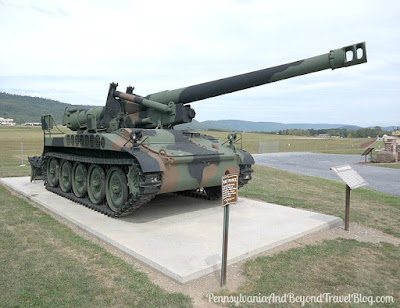






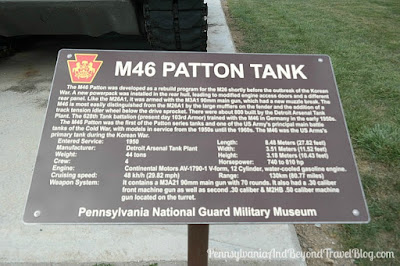
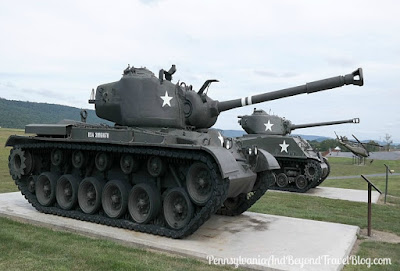



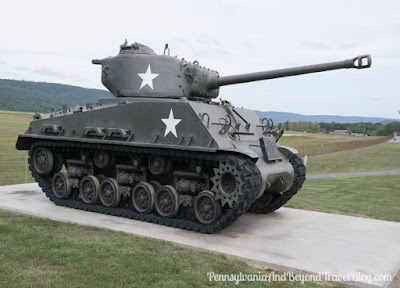

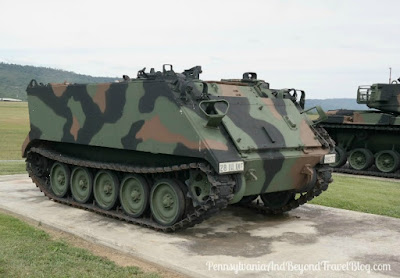
No comments:
Post a Comment